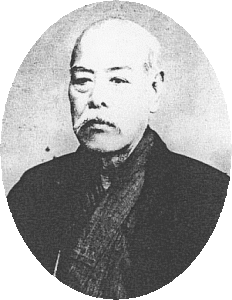
Last week (December 10) marked the 152nd anniversary of Sakamoto Ryoma’s assassination on the 15th day of the Eleventh Month of the year on the old Japanese calendar corresponding to 1867. Ryoma and another Tosa man, Nakaoka Shintaro, were hit at the former’s hideout in Kyoto—the house of a purveyor of soy called the Omiya, located in Kawaramachi just across the street from Tosa’s Kyoto headquarters. The most likely suspects were KondoIsami, Hijikata Toshizo, et al of the Shinsengumi. But the actual killers were several men of the Mimawarigumi, another Bakufu police corps in Kyoto. One of them, Imai Nobuo, confessed to the authorities in 1870 that he and others had acted under orders from their commander, Sasaki Tadasaburo, who was also involved. But Imai claimed that he had not had a hand in the actual killings, since he and two others had been downstairs guarding the place while the others went upstairs, where they attacked Ryoma and Nakaoka. Ryoma’s assassination is the subject of Part III of Samurai Assassins. Following is a slightly edited excerpt (without footnotes):
The contents of Imai’s testimony to the government were not publicized until 1912. Therefore, for decades it was generally believed that Ryoma and Nakaoka had been killed by the Shinsengumi. That myth was dispelled in May 1900 with the publication of a magazine article entitled “Sakamoto Ryoma Satsugaisha” (“Sakamoto Ryoma’s Killers”), based on an interview with Imai. In the interview, Imai reiterated information from his testimony. But he also contradicted his testimony,with some clarifications, including the shocking opening statement: “It is generally believed that at the time of the Restoration Sakamoto Ryoma and Nakaoka Shintaro were killed by Kondo Isami and Hijikata Toshizo. History says so and that’s what most people thought at the time. But actually I did it.”
[The photo of Imai Nobu appears in Samurai Assassins, courtesy of Ryozen Museum of History.]

